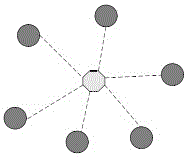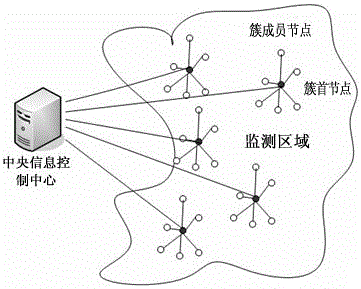Wireless-sensing-network autonomous routing method
A technology of wireless sensor networks and wireless sensors, applied in the fields of wireless sensor networks, routing protocols, channel states, and wireless communications, can solve problems such as incomplete data monitoring, unreliable data monitoring, and unreliable performance of regional networks. To achieve the effect of reducing energy consumption
- Summary
- Abstract
- Description
- Claims
- Application Information
AI Technical Summary
Problems solved by technology
Method used
Image
Examples
Embodiment Construction
[0024] In order to facilitate management, the monitoring area is divided, and monitoring base stations are established near the monitoring area as the central information control system.
[0025] Deploy corresponding sensor nodes in the area, the base station sends a message to the node to wake up the node, the node sends positioning information and energy information to the base station, the base station judges the node with the best signal-to-noise ratio in each area according to the received information status, and sets it It is the cluster head node, and the authority is delegated to make the cluster realize autonomy.
[0026] The cluster head node sends a message to the members in the area, and the cluster members reply the message and apply for establishing routing information, and the cluster head node establishes a routing table and collects the remaining energy of each node. The cluster head node calculates the energy threshold according to the energy information and ...
PUM
 Login to View More
Login to View More Abstract
Description
Claims
Application Information
 Login to View More
Login to View More - R&D
- Intellectual Property
- Life Sciences
- Materials
- Tech Scout
- Unparalleled Data Quality
- Higher Quality Content
- 60% Fewer Hallucinations
Browse by: Latest US Patents, China's latest patents, Technical Efficacy Thesaurus, Application Domain, Technology Topic, Popular Technical Reports.
© 2025 PatSnap. All rights reserved.Legal|Privacy policy|Modern Slavery Act Transparency Statement|Sitemap|About US| Contact US: help@patsnap.com


